Space Race
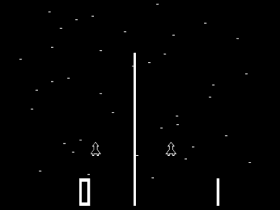 The Game: Two rockets stand ready to lift off for a race into space teeming with fast-moving asteroids and space debris. Collision with even the tiniest piece of space junk sends a player’s rocket back to the bottom of the screen, with a slight time penalty (possibly for repairs) before it can lift off again. A vertical line in the center of the screen serves not only to divide the screen into “lanes” for each rocket, but to count down the amount of time remaining in the game. Whoever has the highest score when time runs out is the winner of the space race. (Atari, 1973)
The Game: Two rockets stand ready to lift off for a race into space teeming with fast-moving asteroids and space debris. Collision with even the tiniest piece of space junk sends a player’s rocket back to the bottom of the screen, with a slight time penalty (possibly for repairs) before it can lift off again. A vertical line in the center of the screen serves not only to divide the screen into “lanes” for each rocket, but to count down the amount of time remaining in the game. Whoever has the highest score when time runs out is the winner of the space race. (Atari, 1973)
Memories: Having scored instant success with Pong, Atari immediately had to contend with one of the side-effects of success: copycats. Dubbed “the jackals” by Atari co-founder Nolan Bushnell, they copied Pong, releasing their own unchanged versions of it under different names. Even companies that would become some of the biggest innovators in the nascent arcade industry made their first steps away from pinball and toward coin-operated video amusements by copying Pong.
And now, to make matters worse, thanks to a pre-existing contract that was taken on in order to keep cash flowing into Atari’s coffers as an untried startup company, Atari was going to have to surrender one of its games to one of those competitors. [read more]

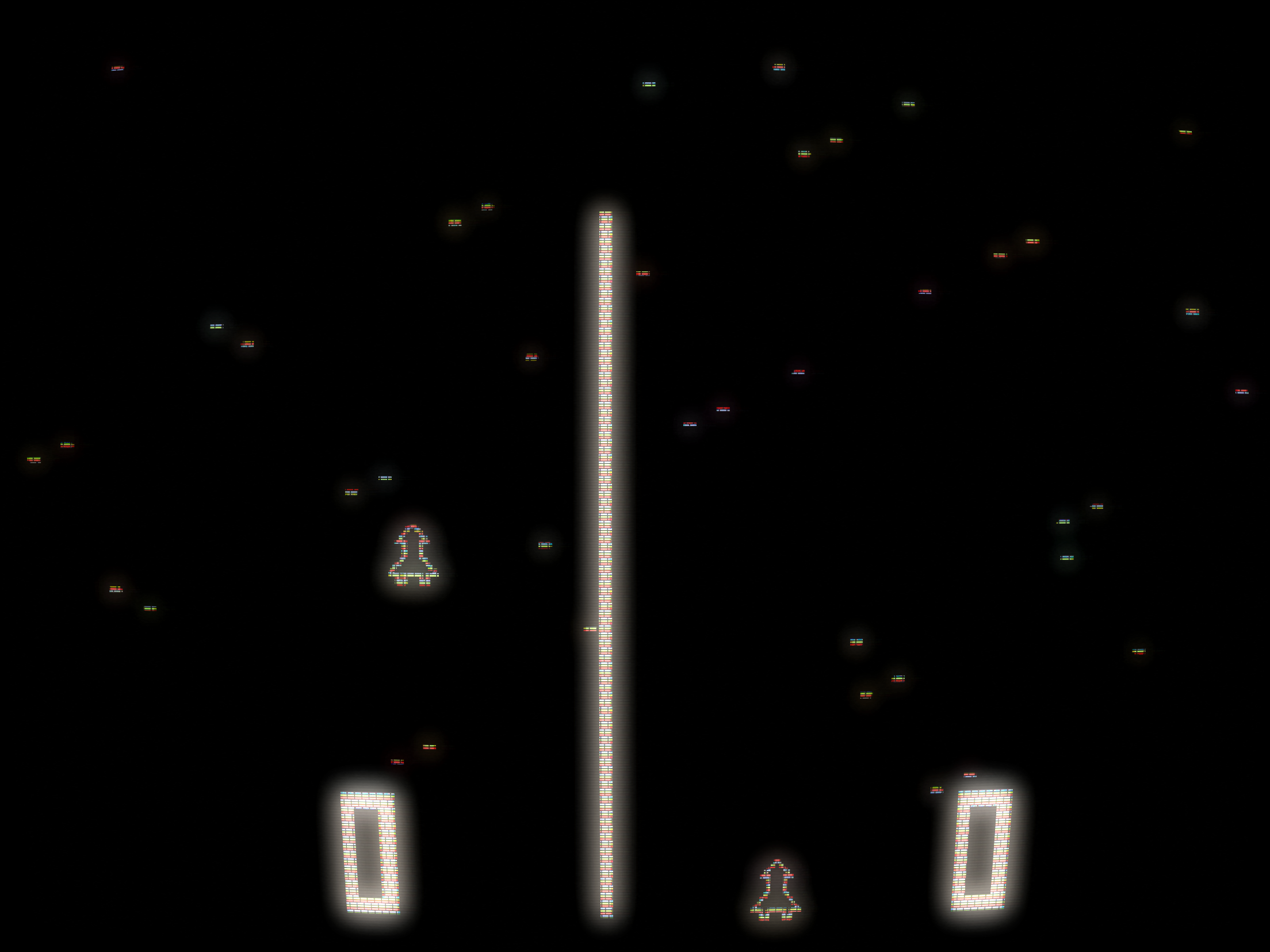
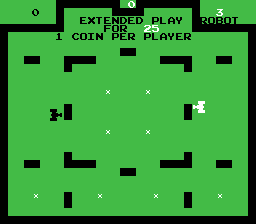 The Game: Two players each control a fearsome armored fighting vehicle on a field of battle littered with obstacles. The two tanks pursue each other around the screen, trying to line up the perfect shot without also presenting a perfect target if they miss. In accordance with the laws of ballistics and mass in the universe of Saturday morning cartoons, a tank hit by enemy fire is bounced around the screen, into nearby wall or mines, spinning at a very silly velocity, and battle begins anew. (Kee Games [Atari], 1974)
The Game: Two players each control a fearsome armored fighting vehicle on a field of battle littered with obstacles. The two tanks pursue each other around the screen, trying to line up the perfect shot without also presenting a perfect target if they miss. In accordance with the laws of ballistics and mass in the universe of Saturday morning cartoons, a tank hit by enemy fire is bounced around the screen, into nearby wall or mines, spinning at a very silly velocity, and battle begins anew. (Kee Games [Atari], 1974)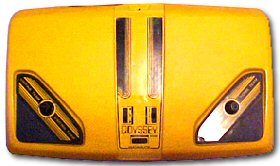 Taking Atari’s lead for the first time, the Odyssey 300 – in its bright yellow shell – saw the console abandoning the trio of horizontal/vertical/English controls that had been in place since the original Odyssey. In addition to mimicking the all-in-one controls of Atari’s Pong, Odyssey 300 – still boasting the standard Tennis, Hockey and Smash variations of its predecessors – introduced digital on-screen scoring. The Odyssey games were no longer reliant on the honor system: at 15 points, one player won the game. [read more]
Taking Atari’s lead for the first time, the Odyssey 300 – in its bright yellow shell – saw the console abandoning the trio of horizontal/vertical/English controls that had been in place since the original Odyssey. In addition to mimicking the all-in-one controls of Atari’s Pong, Odyssey 300 – still boasting the standard Tennis, Hockey and Smash variations of its predecessors – introduced digital on-screen scoring. The Odyssey games were no longer reliant on the honor system: at 15 points, one player won the game. [read more]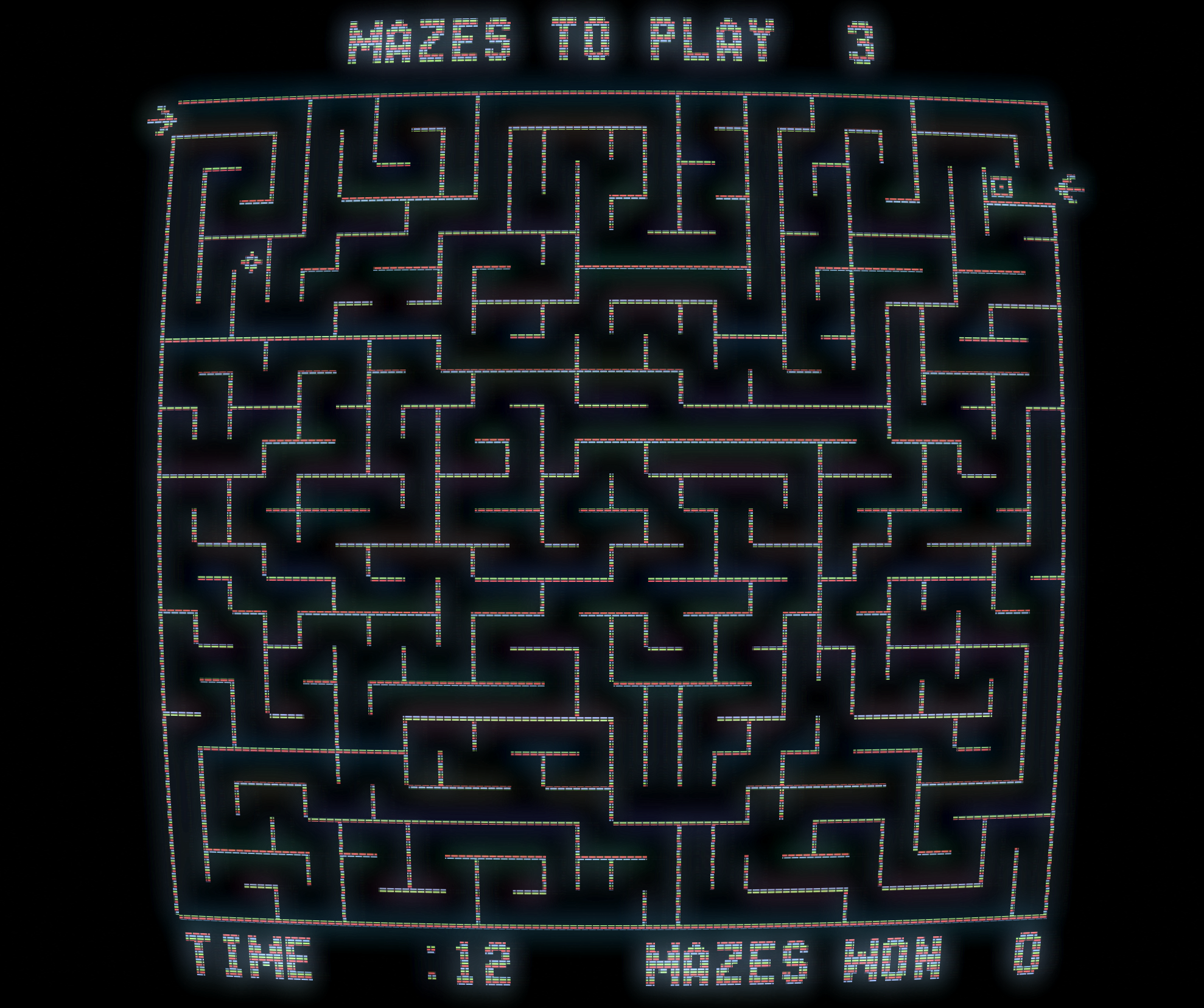
 The Game: You control a dot making its way through a twisty maze with two exits – one right behind you and one across the screen from you. The computer also controls a dot which immediately begins working its way toward the exit behind you. The game is simple: you have to guide your dot through the maze to the opposite exit before the computer does the same. If the computer wins twice, the game is over. (Midway, 1976)
The Game: You control a dot making its way through a twisty maze with two exits – one right behind you and one across the screen from you. The computer also controls a dot which immediately begins working its way toward the exit behind you. The game is simple: you have to guide your dot through the maze to the opposite exit before the computer does the same. If the computer wins twice, the game is over. (Midway, 1976)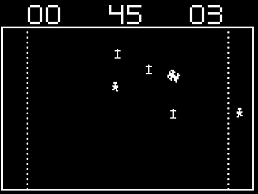 The Game: Two players control one car each, careening freely around an arena filled with zombies. Faced with zombie-fication at the pedestrian crossing of the undead, the drivers have only one option: run over their opponents! Each zombie that’s squashed leaves a grave marker behind that becomes an unmovable obstacle to zombies and cars alike. Whoever has run over the most zombies by the end of the timed game wins. (Exidy, 1976)
The Game: Two players control one car each, careening freely around an arena filled with zombies. Faced with zombie-fication at the pedestrian crossing of the undead, the drivers have only one option: run over their opponents! Each zombie that’s squashed leaves a grave marker behind that becomes an unmovable obstacle to zombies and cars alike. Whoever has run over the most zombies by the end of the timed game wins. (Exidy, 1976)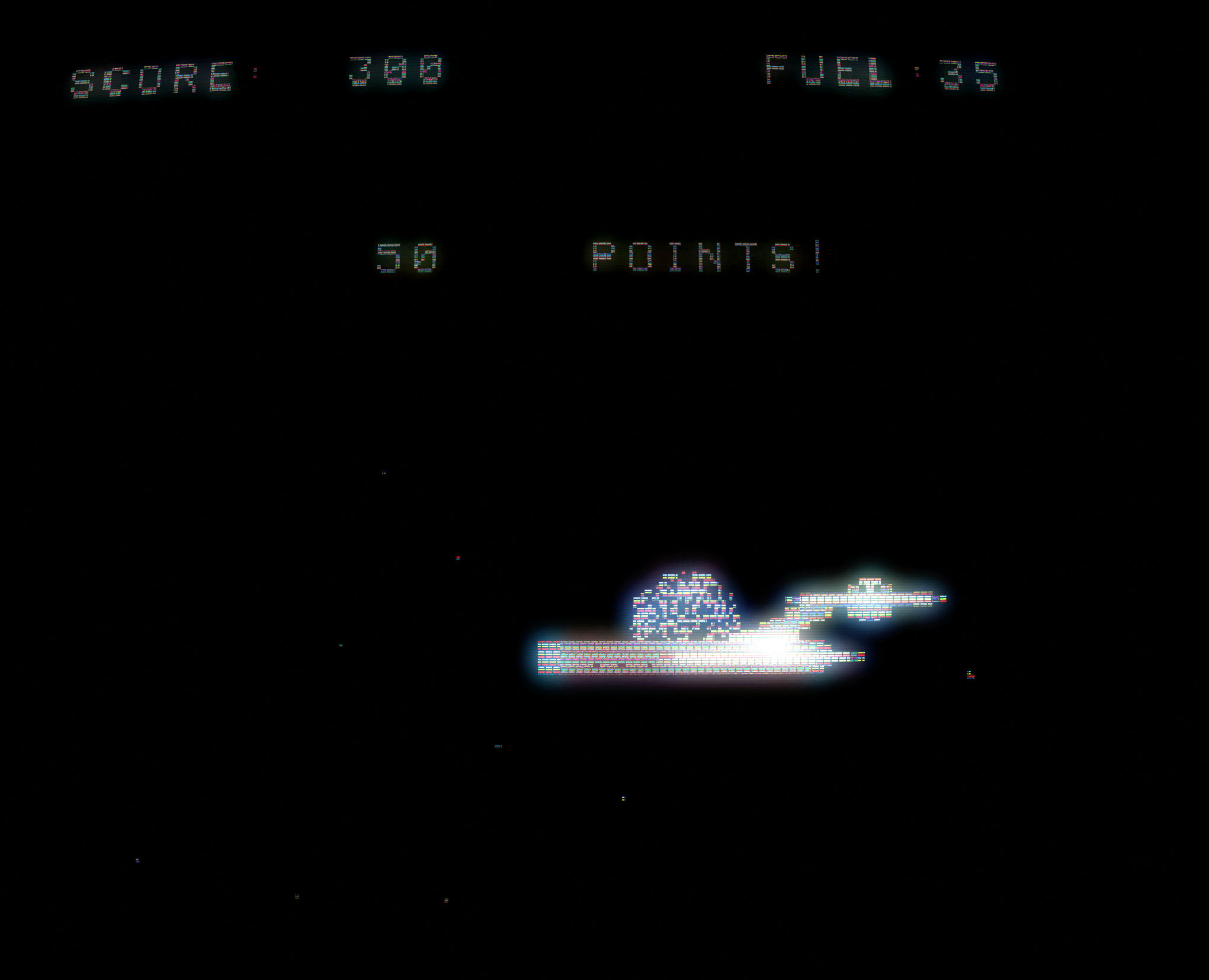
 The Game: Climb into the cockpit of Starship Atari for deep space combat duty. Your mission is simple: wipe out every alien ship you see, as quick as possible, while taking as little incoming fire as possible. Take too much damage, and your fighting days are over. (Atari, 1976)
The Game: Climb into the cockpit of Starship Atari for deep space combat duty. Your mission is simple: wipe out every alien ship you see, as quick as possible, while taking as little incoming fire as possible. Take too much damage, and your fighting days are over. (Atari, 1976) The Game: Activated by leaving a cartridge out of the slot, powering the system up and pressing one of the selector keys, Tennis and Hockey are built into the system. Timed games can be selected, and the traditional rules of each sport apply. (Fairchild, 1976)
The Game: Activated by leaving a cartridge out of the slot, powering the system up and pressing one of the selector keys, Tennis and Hockey are built into the system. Timed games can be selected, and the traditional rules of each sport apply. (Fairchild, 1976)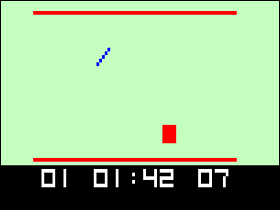 The Game: The first Channel F “Videocart” packs three games into one bright yellow package. Shooting Gallery is a straightforward target practice game in which players try to draw a bead on a moving target. Tic-Tac-Toe is the timeless game of strategy in small, enclosed spaces, and Quadradoodle is a simple paint program, long, long before its time. (Fairchild, 1976)
The Game: The first Channel F “Videocart” packs three games into one bright yellow package. Shooting Gallery is a straightforward target practice game in which players try to draw a bead on a moving target. Tic-Tac-Toe is the timeless game of strategy in small, enclosed spaces, and Quadradoodle is a simple paint program, long, long before its time. (Fairchild, 1976) After the baffling backward step of the Odyssey 400, Magnavox’s Odyssey 2000 saw a return to the Pong-inspired, single-paddle control scheme, with digital scoring restored as well – Magnavox had decided to rest the Brown Box design (and the subsequent variations on it) permanently in favor of, once again, the General Instruments AY-3-8500 “Pong on a chip” processor. Packaged in a red casing, this would be the last anyone would see of the smoothly rounded-off, integrated Odyssey console. The next system to bear the name would return to its roots – with wired controllers that weren’t necessarily stuck to the main console – and look forward, with a futuristic new design that stands up even today. [read more]
After the baffling backward step of the Odyssey 400, Magnavox’s Odyssey 2000 saw a return to the Pong-inspired, single-paddle control scheme, with digital scoring restored as well – Magnavox had decided to rest the Brown Box design (and the subsequent variations on it) permanently in favor of, once again, the General Instruments AY-3-8500 “Pong on a chip” processor. Packaged in a red casing, this would be the last anyone would see of the smoothly rounded-off, integrated Odyssey console. The next system to bear the name would return to its roots – with wired controllers that weren’t necessarily stuck to the main console – and look forward, with a futuristic new design that stands up even today. [read more]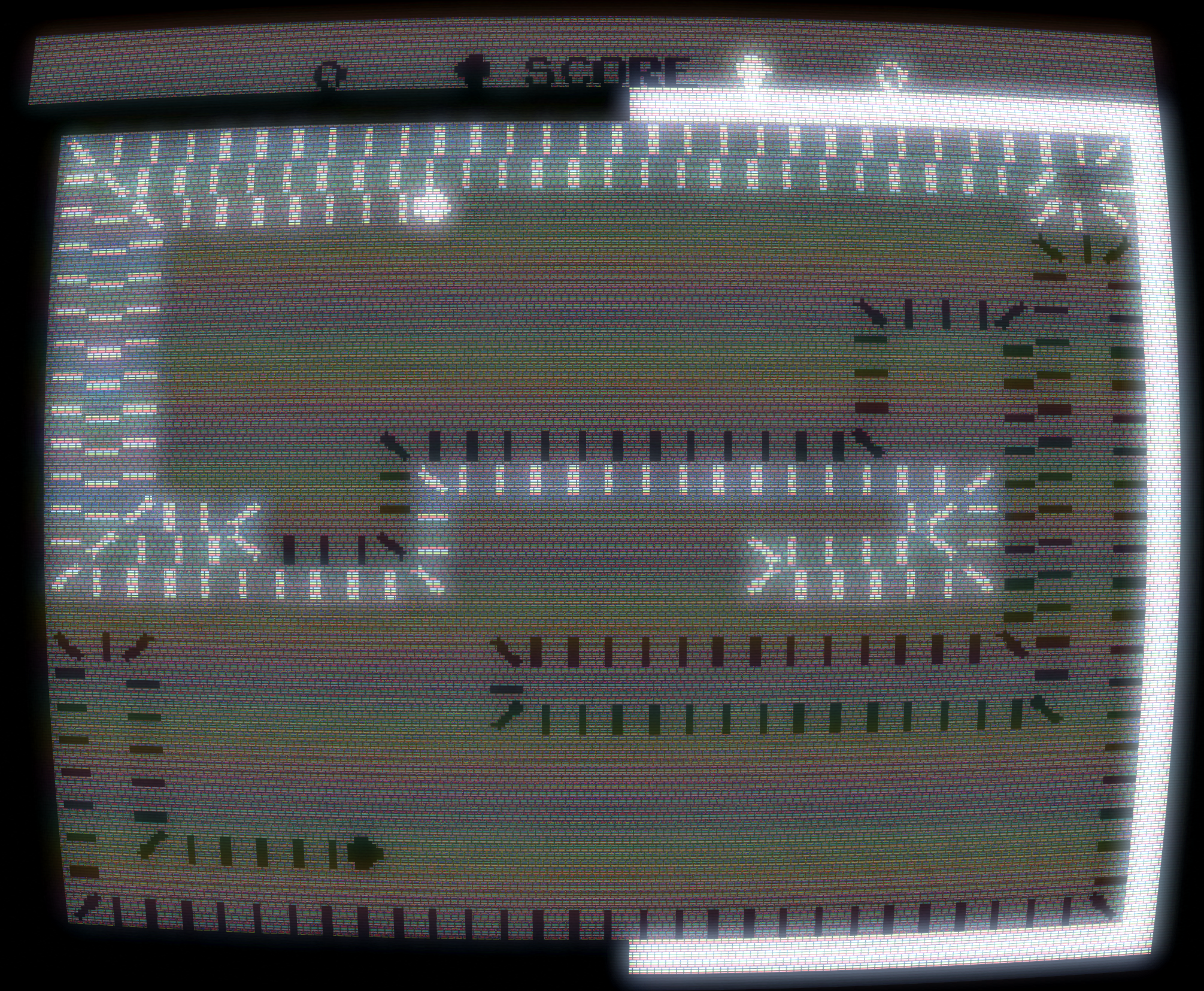
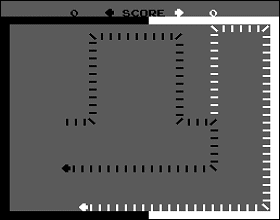 The Game: Up to two players control markers that leave a trail of dominos in their wake. The object of the game is to trap the other players by laying a wall of dominos around them that they can’t avoid crashing into – or forcing them to run into their own walls. Coming into contact with a line of dominos, either you own or someone else’s, collapses your own trail and ends your turn. The player still standing at the end of the round wins. (Atari, 1977)
The Game: Up to two players control markers that leave a trail of dominos in their wake. The object of the game is to trap the other players by laying a wall of dominos around them that they can’t avoid crashing into – or forcing them to run into their own walls. Coming into contact with a line of dominos, either you own or someone else’s, collapses your own trail and ends your turn. The player still standing at the end of the round wins. (Atari, 1977)